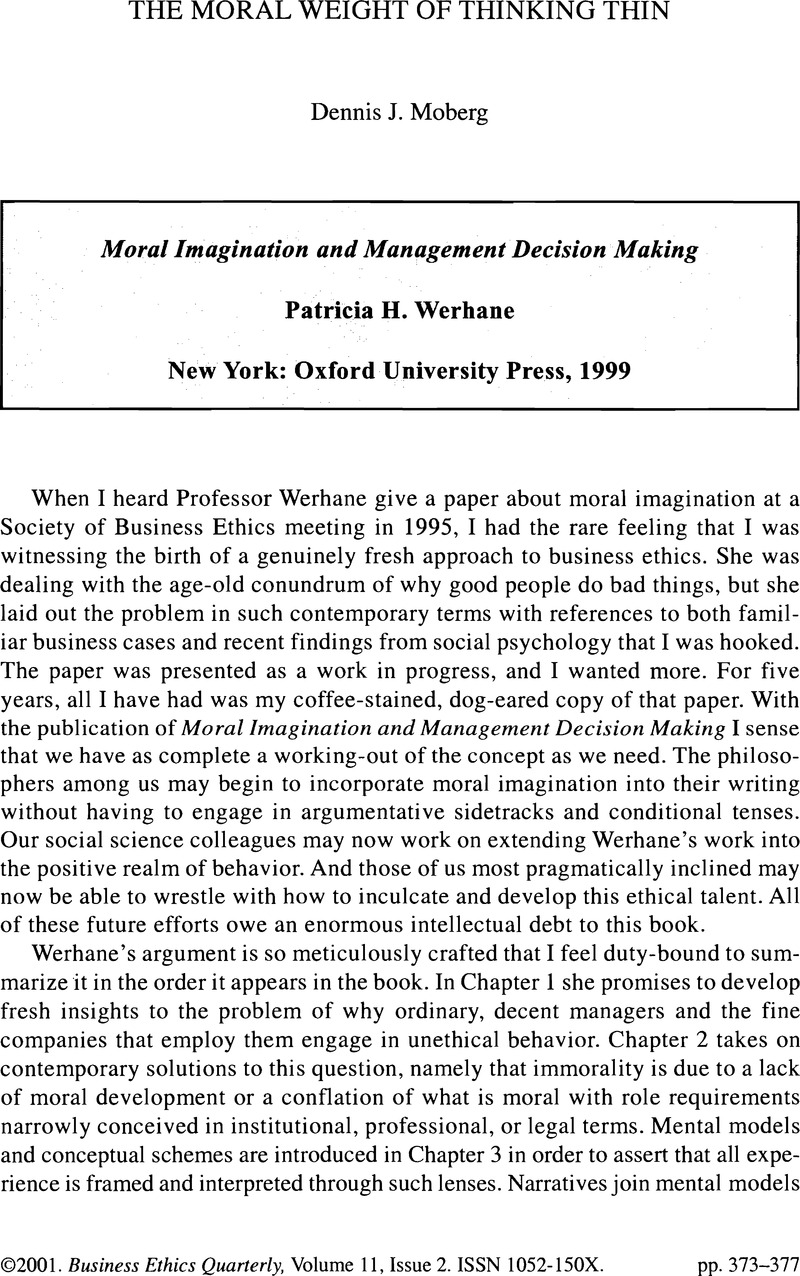Crossref Citations
This article has been cited by the following publications. This list is generated based on data provided by Crossref.
Schwartz, Mark S.
and
Michael Hoffman, W.
2018.
The Moral Imagination of Patricia Werhane: A Festschrift.
Vol. 47,
Issue. ,
p.
95.





